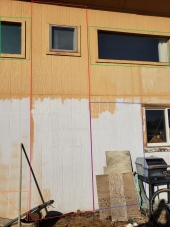
 3
3




Jill of all and Misses of Targets -JMH
 4
4




Joyce Harris wrote:
I am on a suburban site, that primarily has 9m (x3 for ft) and 12m as the front yard, the sunny side (southern hemispheres North).
I am in the final planning of redesigning it e.g. locking in stages of what goes where, in terms of significant plants. Fruit trees being the most significant.
I am wondering what determines growth or food productivity really speaking.
If I put more trees through fully in my yard, and my major garden bed is going to be a huglekulture mound, with other smaller transitional rained bed or pots here and there where they fit.
I have seen all manner of other peoples videos where they have small well used spaces in shade and semishade, when you would not think things would grow normally.
They dont have the space but they use what they have.
What foods grow in urban forests e.g. can I still grow veggies etc if the fruit trees are sprawled around the front yard in such a way that there is NO TRUE direct sunlight in heat of the summer?
What are the key considerations?
DO I protect the space where I am growing in food beds so the shade does not get them or dont worry because the plants will reach for the sun anyway.
Tips, tricks, challenges, or nudges in the right direction?




Visit Redhawk's soil series: https://permies.com/wiki/redhawk-soil
How permies.com works: https://permies.com/wiki/34193/permies-works-links-threads
 1
1




Iterations are fine, we don't have to be perfect
My 2nd Location:Florida HardinessZone:10 AHS:10 GDD:8500 Rainfall:2in/mth winter, 8in/mth summer, Soil:Sand pH8 Flat




Jill of all and Misses of Targets -JMH
 1
1









How Permies works: https://permies.com/wiki/34193/permies-works-links-threads
My projects on Skye: The tree field, Growing and landracing, perennial polycultures, "Don't dream it - be it! "

|
Every time you till, you lose 30% of your organic matter. But this tiny ad is durable:
PIE - The Easy Way to Support Permies.com
https://permies.com/t/240094/PIE-Easy-Support-Permies
|

